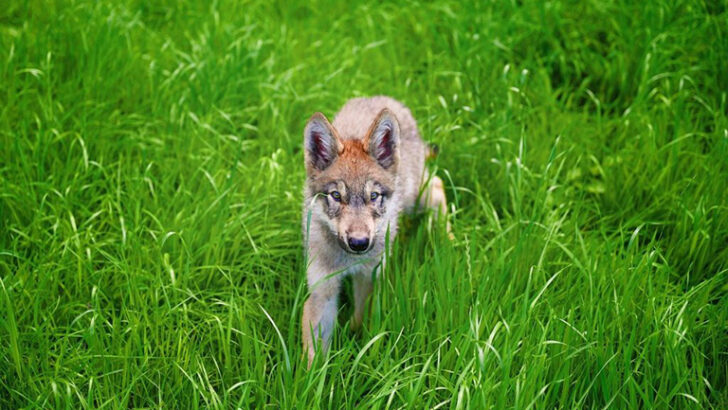Hand in hand with the preservation of the ancient ‘rainforest’ woods and the creation of new stretches of proper woodslands (not the poisonous pine forest that pass for forestry in Ireland – goes the promotions of schemes for the reintroduction of Ireland’s ‘lost beasts’. But the manner in which eagles and others are poisoned by farmers makes this a slow task.
One recent scheme was to replant the wolf into Donegal and Tyrone. This was no more popular around Letterkenny than the wolves are in the Pyrenees or Alps.
Wild
But the idea was that Donegal was the ideal place for them, historically speaking. It was obviously ‘wild’. But this is to ignore two things in ancient and medieval history these bare mountain crags which city dwellers, not having to live among them, so much admire in summer, were covered in natural deciduous forest — the sort of things we can still see fragments of in such places as Epping, the New Forest or Sherwood.
They were not what they are today, nor were they the preferred habitat of wolves. Wolves are like foxes. They like places where the living is easy — how very human of them. So just as foxes like nice suburban areas where they can raid the bins of restaurants and hotels, tear open at their leisure plastic bin bags with discarded takeaways, and most delightful of all, devour all those pet cats put out at night. Cats like being out as they can eat at their pleasure song birds, but for the foxes the cats are a gourmet dinner on four paws.
This is the explanation of the pathetic homemade posters that are pinned up all over south Dublin appealing for information of little Tabby Tom who is lost. Just this morning our local fox crossed our back garden, with a lean and hungry look, mooching from garden to garden on the prowl. He will find something, and his leftovers will be cleaned by the sparrow hawk who takes care of the sea gulls. Wild life is indeed returning to an area that has not been rural since about 1745.
Folklore
But as regards the wolves, their location in ancient days seems to have been in central Leinster. That at least is where the folklore recorded by Gerald de Barri in his Topography of Ireland (first read to the learned world at Oxford in 1187) places them.
It will be recalled that English soldiers and mercenaries in Elizabeth I’s Irish wars hated the country: the woods of oak beech and birch were so extensive and so full of what they deigned to call Irish rebels and indeed of wolves. Rebels and wolves could almost have been symbols of the country.
Many years ago, I planned a novel. I discovered that according to one tradition the last wolf in Ireland was killed in the area of Mount Leinster in 1798. The coincidence of the Rebellion with the death of the wolf seemed to provide a fruitful theme. But further research led me into the quagmire of conflicting dates and places that so often besets the Irish historical writers, I gave it up. The topic is a complicated one and cannot be gone into shortly; but it seems certain enough that wolves still haunted the woods of Glendalough down at least 1710. The other dates of extinction cluster in the end of the 18th century.
Serious thought
But if serious thought is to be given to reintroduce wolves into Ireland — and it seems to many a good idea — they would be better planted not in remote Donegal, which I suspect they would not care for, but into the fields and woods of Kilkenny. Now there is a thought.


 Peter Costello
Peter Costello One of the newly rewilded wolves of Belgium
One of the newly rewilded wolves of Belgium 